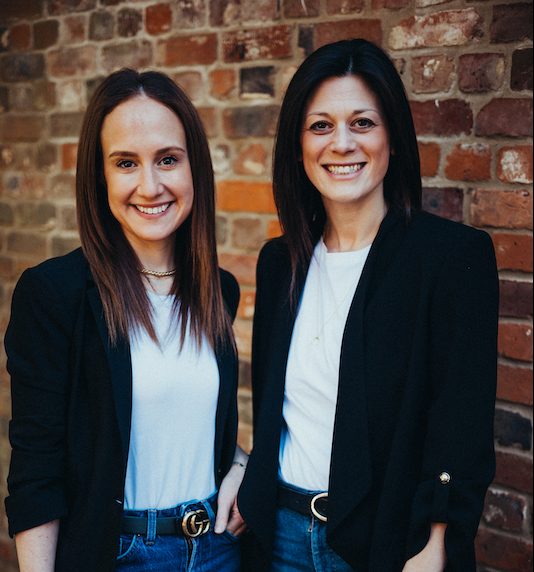When running a startup, founders can feel like they’re spinning lots of plates at once; having to familiarise themselves with various different aspects of the business they may not previously have experience in.
One of these areas can often be PR, many without experience in the field unsure of where to start, the strategies best for their industry or how much you should be paying for PR experts’ services.
For startups unsure on how to approach their PR – fear not! TechRound has spoken with a number of experienced PR professionals on this topic, revealing some of the top tips on how to gain exposure…
Our PR Experts:
- Angharad Planells – Head of Business Development and Culture at RadioactivePR
- Tamika Martin – Ucreate PR & Events Management Ltd.
- David Clare – Head of PR at Fox Agency
- Yvonne Eskenzi – Co-Founder of Eskenzi PR & Marketing
- Kevin Maxwell – Director and Co-Founder of Maxwell Comms Ltd.
- Francesca Baker – Freelance Communications Specialist
- Ilona Hitel – Founder and MD of CommsCo
- Chenoa Parr – Freelance PR Consultant
- Kristin Marquet – Marquet Media, LLC
- Stacey Jaffe & Lisa Fox – Founders of Espresso
- Mary Glazkova – Founder and CEO of This is Fine PR
- Dan Griffiths – Co-Founder at Dot Star Media
- Kerry Ganly – Account Manager of Penguin PR
- Lucy Woods – Freelance Marketing Consultant
- Tori Porter – Founder of Tori Porter Communications
-
Carla Williams Johnson – Founder and CEO of Carli Communications
- Lucy Steadman – Senior Account Director (Technology & Innovation) at The PHA Group
- Michelle Hatcher – Publicist at Michelle Hatcher Media
- Jo Swann – Founder of Chocolate PR
- Hannah Patel – Director, UK at Red Lorry Yellow Lorry
- Tet Kofi – Cofounder at Journolink and Broadcast Journalist
- Adisa Amanor-Wilks – Director of Abjel Communications
- Darryl Sparey – Co-Founder and Managing Director at Hard Numbers
- John Norris – Co-founder and Director of Moonlight IQ
- Nicola Finn – Head of PR at OggaDoon
- Martin Brindley – Founder of Alba Communications
- Jaillan Yehia – Head of Communications at Meddbase Practice Management Software
- Helen Croydon – Founder of Thought Leadership PR
- Georgia Christley – Account Manager at Carnsight Communications
- Julija (JJ) Jegorova – Founder at Black Unicorn PR
- Victoria Usher – CEO at GingerMay
- Love Norlin – Influencer Marketing and PR Executive at Redgert Comms
- Natalie Trice – Career Coach, PR Mentor and Author of PR School
-
Hannah Levitt – Founder, Green Banana PR
- Catherine Lane – Co-Founder of The Influence Crowd
- Nick Baines – Founder at Nara Communications
- Joanna Dodd – Managing Director of Rochester PR Group
- Ryan Haynes – Lead Consultant at Haynes MarComs
- Gemma Birbeck – Director of Loaded PR
- Callum Attew – Senior Consultant at Boldspace
- Simon Moss – Director at Element Communications
- Jessica Smith – Co-founder & CXO SomX
- Katie Morhen – Founder and Director of 52eight3
- Siobhan Lipnicki – Buzz Lead Media
-
Seb Burchell – Digital PR Manager at NOVOS
- Oliver Bradley – Client Director at Words + Pixels PR Agency
- Ben Goldsmith – Managing Director of Goldsmith Communications
- Rosie Davies-Smith – Founder and Director of PR Dispatch
- Cordelia Meacher – Founder and Managing Director at FieldHouse Associates
- Charlie Le Rougetel – MD at BIGTOP
- Martin McGourty – Associate Director at PAN Communications
- Dina Mostovaya – Founder and Managing Director of Mindset Consulting
For any questions, comments or features, please contact us directly.

Angharad Planells, Head of Business Development and Culture at RadioactivePR

“It’s never too early to consider PR for your startup, but a good PR will let you know if it’s too early to hire outside support.”
“When you are ready, find an agency/partner that buys into your company’s vision and suggests measurable tactics that help achieve your business goals. For some, that might be a piece in a national newspaper, for others it might be a follow link on a niche site – whatever it is it should be part of the big picture for your startup, not just coverage for coverage’s sake.”
“At the end of every month a good PR partner should be able to show the value they’ve added. Front page of is amazing, but what did it do in real terms? Drive web traffic? Increase e-newsletter sign-ups? Attract interest from investors? Agreeing KPIs like this ahead of activity is important – it means both sides know what success looks like from PR work and ensures there’s no disappointment down the road.”
“Finally, understand that there will be peaks and troughs in PR. It’s not an exact science or a direct sales channel, but there’s no better way to build a brand reputation and push people into your sales funnel long-term.”
Tamika Martin, Ucreate PR & Events Management Ltd.

“Top PR Tip – Be Authentic: Imagine you’re in the journalists shoes and ask yourself, what it is that you are trying to convey and what makes your story compelling and appealing to the audience you want to attract?”
“Approaching PR has no exact book of rules but approaching it strategically and with a concise desired end goal is something I swear by. Be sure to practice active reading & listening religiously. Keep one step ahead by keeping updated on what is current within the news and media.”
“If you can work your way backwards from the end goal, feel confident that you have a timely and captivating ‘hook’, the rest just flows with ease. You should never need to force a good pitch idea. Being authentic, well researched, taking your time, enjoying the process of being the storyteller and brand builder on behalf of your clients or business is definitely rewarding, especially when you reap good results.”
“Another good rule of thumb, quality often triumphs over quantity. Gone are the days of press releases being distributed over a wire service never as compelling or lands your story more visibility. Your ultimate goal is to be heard amongst the noise in what is often an overly saturated market of news and content.”
For any questions, comments or features, please contact us directly.

David Clare, Head of PR at Fox Agency

“First, get someone onboard with PR experience – whether that’s a hire, a freelancer, or if you’re ready for it, an agency – they’ll be able to help you navigate the media landscape, understand how PR works, and set expectations (especially when it comes to what you think is news versus what the media knows is news).”
“Once you have someone with experience in the field, start building your media assets. This is a very tactical stage, but if missed, you’ll find yourselves scrambling around to get things sorted, so get your ducks in a row first. Develop your talking points, your opinions, basic things such as your media lists, company boilerplate, and imagery, plus spokesperson assets such as bios and headshots.”
“Now you’re ready to go out to the media. If you have a story (launch, major partner, significant hire etc.) then pitch it out – but take a ‘sniper’ approach and select a few key journalists who you’re certain will be interested. Don’t scattergun anyone with ‘journalist’ or ‘reporter’ in their Twitter bio.”
“And if you don’t have a strong story, that’s no problem. It’s a great time to meet the media, brief them on your company, explain what your company does that’s unique, what your vision is, and key milestones you hope to reach. You may not get coverage from such conversations, but you’ll build the foundations of a strong relationship that will pay dividends when you do have news in future.”
Yvonne Eskenzi, Co-Founder of Eskenzi PR & Marketing

“Engaging with a PR company is an exciting time in a start-up’s journey. They will first want to work with the PR company to get their messaging spot-on. It’s easy for those close to the technology to become blinded by what they think and include far too much technical detail, so really work with the agency to find USPs and think about the who, what, where, why and how.”
“Create a mind-map or post-it note board when brainstorming to organise thoughts – this will help simplify the message, while not forgetting key points. If the start-up has outside validation of their solutions or customer feedback, it’s important to share these and try to align as much as possible to business, financial and operational issues that will help shape the overall PR programme.”
“Once this stage is completed and the company has rock-solid messaging, form a content strategy plan around not only product development (which has limited interest to the press), but also the issues that have been identified that the start-up is helping to solve and key spokespeople for the organisation. Think about content creation around “Top 10s” (top 10 things you didn’t know about X’; ‘Top 5 issues in Y and how to solve them’, etc).”
“Also consider what kind of proprietary research, surveys or reports the start-up can produce to support the content strategy. Finally, based on the messaging and issues the start-up is solving, create a slide deck that clearly illustrates the market gaps where the solution fits in and what the company does differently to solve it to be prepared to engage with key analysts in their business sector.”
“Most of all, ensure there is time to dedicate to PR – a two-way relationship always works best. Ultimately, PR is all about working together to produce the best outcomes!”
PR checklist:
- Identify your target audience – E.g. Investors, Channel Partners, IT Managers, etc.
- What’s the story – what’s exciting – USP? What are your business objectives? Do you have a ‘product / services roadmap?
- Which key issues do you address? Who are your main competitors – how many do you have?
- Who are your key spokespeople? Why are they interesting? Do you have good photos of them? Are they media trained?
- Do you have any research – this can be key to get unique coverage? If not, how can you get original research/facts/figures?
- What do you want success to look like – what’s your vision? What is your press wish list? What are the top 10 publications you want to be in?
- Which three vertical sectors do you want to reach immediately?
- Do you have case studies/testimonials?
- Do you have a product demonstration?
- Which trade shows events are you attending, exhibiting or speaking at?
- Do you have a Company backgrounder on all investors?
- Do you have collateral as physical or virtual handouts – Product Sheets, Brochure, Investors, Customers, Recruitment, Website, Facebook, Blog, YouTube, Instagram, others?
Kevin Maxwell, Director and Co-Founder of Maxwell Comms Ltd.

“Don’t assume stressed and cynical journalists will be instantly drawn to a press release. A better approach might be an introductory pitch about you and your business that’s relevant and interesting to a journalist.”
“Before you put pen to paper, look through the following questions – the answers will help you be more strategic in your approach as well as maximise the chances of generating meaningful coverage:”
What do you want out of a PR / media campaign?
Do you want to generate new users or catch the eye of potential investors?
Who’s on your media title ‘wish list’?
Do you want coverage in trade, national titles, start-up or tech titles?
What high resolution digital assets do you have?
Journalists will want videos, logos, screen grabs and photos for their stories.
How unique are you?
What’s your USP and who are your rivals?
Sector background information
What are the independent reports facts and figures that help reinforce your business model?
What case studies do you have?
Case studies bring life and colour to a journalist’s story as well as providing a sense of validation.
Do you fit into the bigger picture?
What are the current stories and issues relevant to your sector a journalist will find interesting?
For any questions, comments or features, please contact us directly.

Francesca Baker, Freelance Communications Specialist

“Think about your target audience and where they are spending time. Yes we’d all like to see our business in a double page spread in national newspapers, but is that where people are looking for information about start ups like yours? Focus on your audience, and let the outlet know why what you have to say will offer value.”
Ilona Hitel, Founder and MD of CommsCo

“For talented entrepreneurs and startups doing great work around the world, PR is often low on the list of priorities, when the primary focus is on R&D, finding finance, securing customers, and hiring. However, PR supports many of these initiatives and can help scale the business, so a low-level campaign should run in sync with these priorities.”
“First, start with the ‘story’, the why you came up with the product or service, and what you are fixing for your customers. Choose your position in the market, and the gap you are filling to differentiate from your competitors. Once you have this it will be easy to communicate the key message consistently to your audience via the sales and the marketing team, and across online channels. It’s amazing how many companies don’t have the ‘killer’ messages agreed early on. This will help ‘create and establish your category’ and enable customers to understand what you offer.”
“Ensure you use any customer stories to sell the ‘why’ they bought into you, what problems you fixed, to enable other companies to follow suit. In the absence of a customer, you are going to have to rely on any research to support the market need.”
“You should also make sure you are topical – following the news agenda and calendar to optimise your opportunities. A good PR agency will build a content plan that maximises the calendar and news events. Your PR should be external (rather than internal facing) and resonate with issues facing the market.”
“If you’re wondering about kicking off your PR and marketing, ask yourself what the risk is of not doing it. It is all about momentum, and as your profile builds, more opportunities arise. At the end of the day, if you’re not marketing your proposition to customers, it’s almost guaranteed your competitors will be.”
For any questions, comments or features, please contact us directly.

Chenoa Parr, Freelance PR Consultant

“Create a media list with the ‘follow the leader’ technique: Not sure where to start with media coverage? Check out your competition!”
“It’s often referred to as the ‘follow the leader’ technique and is a great way to figure out which publications you should appear in and can help inform your PR strategy.”
“You can do this in one of two ways. First, simply go to your competitor’s website and check out their ‘press’ page which will include a list of media appearances.”
“Secondly, just Google their name and you’ll get a list of online media featuring their brand. Note down where they’ve appeared, the headline, date and the journalist’s name. This gives you a working list of potential media sites that may be interested in your product. The headlines provide food for thought as to how a journalist may cover your brand and can be eye opening as it’s probably different to what you expect.”
“The date tells you how recently they’ve covered the story. If it’s within the last week they probably won’t cover something similar but may be interested in a fresh perspective that moves the story on. If it’s been more than 6 months, there may be scope for pitching your story with a different angle.”
Kristin Marquet, Marquet Media, LLC

“Startups can approach PR in an easy manner by determining what makes their businesses newsworthy and credible. Newsworthiness involves what makes your business interesting and unique, while credibility is all about what makes your business trustworthy.”
“Newsworthiness can be a new product or service launch, opening a new office, or making a new hire. Credibility involves what makes consumers trust your brand or business. These are the two most important elements to launching an effective PR campaign.”
For any questions, comments or features, please contact us directly.

Stacey Jaffe & Lisa Fox, Founders of Espresso

“As an agency who works predominantly with start-ups and growing businesses our approach concentrates on getting under the skin of the brands we are working with to firstly, understand the business founders and their background as a means to tell their story and build a brand personality and second to understand their business objectives to utilise PR to help achieve them.”
“Our approach is not one size fits all, each client is unique with their own story and goals. Our passion and proposition is to help start-ups achieve their business and personal objectives through the means of PR.”
“The PR landscape has changed significantly over the last year, the boom of exciting new businesses and innovations supported tremendously by the British public has resulted in new forms of media and new opportunities for growing businesses.”
5 top tips from Espresso on how start-ups should approach PR:
1. Work with a like-minded agency who believe in and fully understand your brand
2. Reserve budget for the absolute must have opportunities
3. Take time to understand your customer and who truly influences their decision-making habits
4. Think hard about media targets, whilst some coverage / publications may look impressive, they may not reach your audience
5. Work with the right influencers, it’s not all about the numbers, take time to investigate engagement and followers
Mary Glazkova, Founder and CEO of This is Fine PR

“Don’t pay for PR: Don’t get me wrong — good publicity can bring startups many benefits, from recognition among investors and partners to building the brand’s public image. But many early-stage companies spend tons of resources on PR every month just to satisfy a craving to be featured in top-tier media.”
“Do PR yourself: A lot of PR can be done in-house in the early days — for free. For a company in its earliest stages, the best PR comes from founders themselves. Living and communicating company values, joining meaningful conversations on social media, starting a personal blog and industry networking can be more meaningful for getting your company known than fruitlessly trying to pitch the BBC, Le Monde or Handelsblatt.”
“Determine your goals and hire a PR person when needed: Some examples of times to bring on a PR consultant at an early-stage startup include:”
- Product launches
- Expansion into new markets
- Venture funding rounds
- Accelerating recruitment
- Participating in major industry events and competitions
“An experienced PR consultant can not only advise how to handle press at those times, but also do the valuable introductions, help to prepare and coordinate publications — and much more.”
For any questions, comments or features, please contact us directly.

Dan Griffiths, Co-Founder at Dot Star Media

“In many startups budgets will be tight. My advice would be to get on #journorequest on Twitter. This hashtag is popular with journalists posting requests for interviews and case studies. If you can help a journalist out with an on-brief response, this provides an uncomplicated way of landing media coverage.”
“Before responding have spokespeople briefed and available to comment, make high quality product and portrait images easy to find, and respond promptly when you hear back from an interested journalist. These things can make all the difference.
The hashtag is busy with thousands of posts every day. Competition for the best requests is fierce. If you have zero budget, try using Tweetdeck or similar to setup relevant keyword filters – e.g. “#journorequest +fintech OR +edtech”. Use the mute function to remove as much of the noise as you can.”
“Spending all day monitoring Twitter is unrealistic for most, so services like IFTTT or Zapier can be used to generate alerts.”
“If you do have some budget, save yourself time by subscribing to one of the specialist journalist enquiry services who also monitor the #journorequest hashtag, such as Dot Star Media (disclosure: that’s us) or Press Plugs. Both services offer free trials.”
Kerry Ganly, Account Manager of Penguin PR

“It is staggering and also very inspiring the number of businesses which have been created during the past 12 months,” said Kerry Ganly, account manager of Derby-based Penguin PR; recent winners of ex-Dragons Den star Theo Paphitis’s Small Business Sunday scheme.
“We have seen a wave of young start-ups and also companies re-imagining their business model and, as these entrepreneurs look to grow their businesses, they may wish to start consolidating their position in the marketplace and investing in skills – or, indeed the right people – to help them to run their business successfully.”
“Public relations – PR for short – is key to helping you to raise the profile of your business. It’s a profession which a lot of journalists choose to do when they fancy a change of career, because there is quite an overlap; journalists want to write about news and the job of a PR professional is to get your business in the news, to raise its profile.”
“PR is not marketing; it isn’t a sales message. No media outlet will touch your story if it’s too ‘salesy’.”
“PR gives your brand a human identity, informs and educates people about what you do, raises awareness in your local industry or community and creates opportunities.”
“If you’re going to write your own press release, consider this: What is your news? When did it happen? How interesting is my story or, how can I make my story more interesting?”
“Find the right target audience and remember the six W’s – Who? What? Where? When? Why? HoW. Remember quotes and always accompany your press release with a relevant, good quality picture. Make sure the photo is 300DPI (dots per inch) and send as a jpeg – not embedded into the email.”
“The file size should be no more than 1MB and remember to include a caption; include lots of faces in your picture and, if you can, go outside. Ensure that everyone in the picture, particularly if there are children in it, has consent and, when pitching your news to the media, keep your pitch short, sweet and to the point.”
“Copy and paste your press release into the email and always add a contact number, so that if the journalist wants further information, they can contact you.”
“Choosing the right PR agency is essential. There are many ‘free’ resources out there for start-ups to use; searching the hashtag #journorequest on Twitter is great. Many journalists post requests for story ideas using this hashtag.”
“However this can often be time consuming and we would always advise contacting a PR professional to help out.”
“Experience and seeking out those people with experience – be it PR professionals, accountants or HR consultants who can help and support you – is vital in making your business a success.”
“Take advice, ask questions and surround yourself with like-minded people.”
For any questions, comments or features, please contact us directly.

Lucy Woods, Freelance Marketing Consultant

1) Keep it inhouse where possible
“PR might not be the first priority for a tech startup and if budgets are lean, outsourcing is a sure way to rattle the cage. So, prioritise PR by appointing a team member or a freelancer to get to know who’s who in your industry. Who are the journalists writing about your product or service offering?”
2) Weave it in your monthly comms activity plan
“If PR isn’t spoken about during the comms and strategy meetings, you’ll never get noticed by the press. So ensure all company updates are flagged with the comms team in case there is something juicy which can be whittled into a press release.”
3) Ditch the pdf attachments
“Nothing more annoying that downloading a Word doc on a mac and the formatting going all strange. Or downloading a PDF and trying to copy and paste….gross.”
“Add your press release into the body of the email you’re sending out to journalists – with a high res supporting image or a link to an open drive of imagery.”
4) Don’t be afraid to resend your press release
“Journalists are busy people, and get loads of emails so don’t be afraid to send a couple of follow-up emails. If you find yourself opening up a fifth nudge email….it’s probably time to call it a day.”
5) Long live the Founder narrative
“Founders and entrepreneurs are interesting people (more often than not) so there will always be a founder angle that can be leveraged for PR purposes. Those regular comms meetings will help identify when and how to use it.”
Tori Porter, Founder of Tori Porter Communications

“PR is what will set your start-up business apart from other players and competitors in the industry. However, it’s important for startup founders to understand the associated costs with getting their name out there. PR is an investment and a long game.”
“One is understanding the importance of consistency. From my experience, short term PR only creates short term results. The moment you stop the PR, the coverage gently trickles to an end. So essentially, you want to look at PR as being a key and consistent part of your business. Laying the foundation in the press takes time and when you’re consistently pitching to press & telling the unveiling story of a growing business, the results are more regular and authentic.”
“If you’re new to PR, It’s important to understand that results don’t happen overnight. Once you’ve got your assets together and created your press releases, you’ve got to spend time nurturing relationships with press and building their trust in the brand. A feature may depend on timing or the journalists editorial calendar. Plus, some magazines work with lead times of 3-4 months in advance so it can take time for coverage to come out. Over time, your business will build credibility.”
“Before beginning your PR journey, spend time understanding the ‘Why’ behind your brand and your story/ what you’re trying to achieve with PR. If you don’t know your story and your mission, how can someone else sell it successfully? Once you’ve got this sorted, make sure you have all the assets ready. Images of your products, a founder bio, a website, and start planning your launches in advance and letting your PR know as they will be working towards journalist’s lead times.”
For any questions, comments or features, please contact us directly.

Carla Williams Johnson, Founder and CEO of Carli Communications

“Many startups think that getting press is out of reach but really it’s not. This is a simple four step process anyone can follow:”
R: Results – “Identify which media you’d like to target based on your message; this will ensure your hard work will pay off. Whether you’re into health, relationships or business, find the magazine, podcast or publication that best suits you and start making your wish list.”
E: Evaluate – “Take stock of their audience; is it made up of your ideal customer? Do they have the reach you’re looking for in terms of community or international appeal? How would your contribution enhance their listeners, readers of viewers? Remember it’s about them.”
A: Align – “How does this media align with your goals. What would you like to accomplish? Increase engagement and awareness, more opt-ins? Also, ensure the media is aligned with your values as well. Sometimes a publication may seem great, but your values and theirs do not align and may do more harm than good. Make sure you feel that it’s a right fit.”
L: Leverage – “Use work you’ve done previously (free or paid) to give yourself credibility.”
Lucy Steadman, Senior Account Director (Technology & Innovation) at The PHA Group

“Journalists receive hundreds of pitches daily, so it’s vital that you can concisely show what makes your business stand out and why it’s important – without marketing jargon. In phrasing this, think about how you fit into a bigger, topical news issue – is there a societal problem you are solving? A currently difficult process that you are simplifying? The main question to answer is: why should they care about this?”
“You’ll also need a ‘why now’ in your pitch to create urgency and show why a journalist should cover your business now and not in a few months’ time (or never). Did you just complete a fundraise, for instance, and could offer that news exclusively? Or is there a major media story in the news already that you have a unique opinion on or solution for? The ‘why now’ is crucial in helping you cut through.”
“Another common misunderstanding about the media is assuming that they will write what you ask them to write, or that they will let you review the copy before publishing. This is not usual practice – so don’t target publications that have never covered a business like yours, and don’t say anything in an interview that you wouldn’t want to see in writing.”
For any questions, comments or features, please contact us directly.

Michelle Hatcher, Publicist at Michelle Hatcher Media

1. Know your audience – “Can’t stress this enough. No, in fact, I shall stress it again. There is no point giving yourself a megaphone (which is what PR has the potential to be) if you don’t know what direction you’re pointing it in and who you are going to shout at. Know what they want, know their voice, their language, their ins and outs and everything else. Know what they want to hear and how they want to hear it. Then you are halfway there. Get the message right and everything will slip into place.”
2. Manage your expectations – “OK, so everyone wants to be on the front page of the Evening Standard or The Times, and hey, want your shot on Vogue? You might have to scale it down a bit unless you have bagged yourself a moon landing or the arm of the next hot thing. Start small (which will bring me on to point 4 later) and manage where your voice fits. It might not be wise to consider Vogue unless your business fits their audience anyway. Be realistic, that way the fall isn’t going to be so high up. Think of what you are truly after – is it raising brand awareness? Generating leads or creating sales? Are you after thought leadership? Better customer relations? Stronger profile? Do your SMART test and understand first why you want to launch a PR campaign, which brings me neatly onto point 3…”
3. What do you want PR for? “This might seem like an odd question but finding the true answer to this can really knuckle down to what’s driving you. I have met countless clients who ‘just wanna get our name out there’ which is great but when I ask why? I often get odd looks. You have to know why you want it. Is it because you think you should or because it’s the done thing these days? Be clear about what you want from it and how you want your business to be seen. Or it could be a waste of time.”
4. Don’t forget the local press! “They are dynamite for any business and must never be overlooked. After all, it’s where a lot of national press get their stories from. A big story you see on the Beeb might well have started off as a local report. Local and regional press are friendly and they will want to work with you but make sure your stories are relevant to their audience. Don’t pitch to the Brighton Argus when your story is in Bristol.”
5. Measure measure measure! “Actually, this could be PR’s only bad trick. It’s almost impossible to measure PR at the same level as marketing, for example. You look at reaches and estimates. It’s hard to track if you are looking for sales but great for engagement, especially if you are interested in gathering likes, comments and shares on the digital platforms. Even so, you need to still see where your buck is getting you. Digital PR campaigns carefully interwoven with SEO strategies will earn you credibility with search engines especially combined with quality backlinks.. .but that’s for another post!”
Jo Swann, Founder of Chocolate PR

“PR for startups should be a no brainer – why wouldn’t you want to launch your business into the world with confidence and conviction? Use the ultimate PR hook of being ‘new’ to get yourself in the press. Often people don’t do this, due to feeling nervous, not ready, ‘too new’ – but here’s the thing – being a startup is a PR story in its own right and you really must milk this opportunity!”
“Gaining media recognition at the start of your business can supercharge your growth, building credibility and visibility from day 1.”
“So – what to do?”
1. “Launch with PR. Seize the moment. Tell the media about you quitting the 9-5, about you following your passion and purpose. Tell them why, what led you here, and share what mission you’re on “
2. “Claim your expert status with PR – You don’t have to have a million years experience to be an expert. Your expert status comes from the 360 degree version of you – your life experience, qualifications/career path, values, purpose. Illustrate and own this with a strong bio then submit guest expert knowledge sharing articles”
“It all starts with you. Help your audience to get to know you from day 1 so you can find ‘your people’ through sharing your story and knowledge through the media. Those who need you will resonate with you – and they are your ideal clients.”
For any questions, comments or features, please contact us directly.

Hannah Patel, Director, UK at Red Lorry Yellow Lorry

“My first piece of advice would always be to slow down and think it through. The fact that you exist isn’t news on its own. And unless you happen to be Microsoft or Amazon, neither is the fact that you’re launching a product, looking for investors or have closed an investment round. You need to think about why you exist, and be able to articulate that in a compelling and engaging way. Focus on telling that overarching story, rather than just being ‘faster’, ‘cheaper’ or ‘better’ than those who have gone before.”
“And if you think you don’t have competition, I’m afraid you’re wrong. Everyone is competing with someone else for share of voice and mind – even if their product or offering is totally different to yours. So, understanding why you’re different is key.”
“Finally, look outside, before looking inwards. Define the problem (or problems) you solve and who you solve it for, then gather data and stats to support this. If you can connect this with a broader industry issue or story and have a constructive but fresh opinion, you’re on the right track.”
Tet Kofi, Cofounder at Journolink and Broadcast Journalist

Relationships are in the DNA of PR – “PR requires you to build 3 relationships: with the journalists that can give you coverage, the media that are the platforms trusted by your target audiences (you need to find out what your target audiences read), and the customers that buy your services and validate them with purchases.”
Coverage is Earned – “Knowing what to say in your stories or news, meaning the content you send journalists, activates your relationship with journalists. Remember, without your news, quotes, and case studies, they’ve nothing to share. Their entire raison d’etre is to provide insight into trends, developments, breakthroughs, disappointments, and solutions in your sector. Only you can provide these. Getting the journalist’s attention is simply a matter of earning it by providing them with material they want to share.”
Timing – “Finally, get your timing right. Your industry has a news agenda or a set of issues that are topical and causing interest at any given time. You get noticed by journalists by sharing insights and experiences that inform the current ongoing discussion in the media. Do that and Journalists will not only carry your news but use you as a trusted future source and contact.”
For any questions, comments or features, please contact us directly.

Adisa Amanor-Wilks, Director of Abjel Communications

“A solid public relations plan is an important and efficient way to get your company’s name out there and raise awareness about what you do. But hiring an agency to build and manage your PR efforts can be expensive. Fortunately, there are a few things you can do now to kickstart your PR efforts. And they won’t cost you much but time. Here are three things you can start to do today to boost your company’s image in the public.”
Write and submit guest posts – “People are always looking for different perspectives on various issues, and so a blog post is a great way to demonstrate your knowledge and understand your industry. You can create your blog and/or send these to your local media to publish.”
Conduct original research – “Conducting your research helps give you data you can use for your communications and brand positioning. Look into issues that affect your industry and matter to your audience. Then start conducting some study into the case. Collate the information you get and present it to your audience. By offering unique data, you’re positioning your company as a credible source for your clients and media.”
Get involved with a community charity – “There is no better reason to volunteer your time and resources to charity than the joy that comes from helping others – but there can be some added PR benefits when you donate your time to a worthy cause. Your participation can generate good PR through a press release or news article about the collaboration.”
Darryl Sparey, Co-Founder and Managing Director at Hard Numbers

“Be clear on why you’re investing in PR to start with, and what the outcomes are that you want to drive. If you’re a consumer-facing app, looking to drive downloads, I wouldn’t start with PR as my first investment in marketing. Once you’re clear on the objectives and how you define success, you need to understand who the audience is, and what the messaging and proposition is to them. This is something we can help perfect, but you need to have an idea of this. The audience can’t be “consumers over the age of 18″, either! Once this is agreed, it’s time to engage professional help, whether in-house, a freelancer or small agency. I wouldn’t advise founders to try and do this themselves without prior experience.”
“For start-ups, case studies are a great way to get exposure – media awareness of your client can be helpful in securing coverage. Write into all customer contracts that they have to provide a case study. 50% of your clients won’t question it, 25% will, and you’ll negotiate. The remaining 25% will flat out refuse, but you then have a contractual clause to negotiate a concession from your prospective client if you remove.”
For any questions, comments or features, please contact us directly.

John Norris, Co-founder and Director of Moonlight IQ

“Start by focusing on developing a strong foundation through messaging – brand values – USP/differentiators – and understand why people should care.”
“Before anyone can become your client, they need to know you exist, what you do, and why you should be the preferred choice. We review every piece of client communication with the “two question test”:”
• So what? If you can’t answer this, start again.
• What’s in it for me? Bring relevance and value to your target audience.
“When setting out to develop the core messages, take time to produce a SWOT to understand the business in the wider, real-world context.”
“The aim of PR is to create and maintain a desired profile and perception of the brand values and benefits to customers. The brand should be easily recognised and consistent across all points of contact, including website, collateral, etc. Every touchpoint should look and sound like the same company.”
“A percentage of owned content is discounted by your audience, and direct advertising is often forgotten, but earned media is worth its weight in gold. Having external sources mention your business can make a major difference, but they first need to know you exist, what you do, and the benefits you bring.”
Nicola Finn, Head of PR at OggaDoon

“Whether you are just embarking on your business journey, or you have found that your business landscape has changed, ‘ahem! Covid pandemic’, it is always good practice to raise your head above the parapet and reaffirm your business priorities around retention and acquisition. Marketing activities must all be aligned, ‘everyone focused’, steering the ship together in the right direction. ”
“Key questions to ask at this stage are what have you achieved in the past? Where are you now? Where do you want to be? What is success? Metrics can be set for different functions and operational parts of a business, but how is it done in PR? What PR value is it bringing to the business?”
What PR metrics do you analyse and why:
Coverage tracking, reach and domain authority – “If you have already been generating PR you can start by looking at the number of ‘copy based’ press hits that you have and apply metrics such as readership, reach and domain authority. A very important part of this is to include video and audio coverage, live or on demand from events or social (Don’t forget the user generated stuff). This can be split further by local, national and even global coverage depending on where your target markets are physically or digitally located.”
Types of publications and coverage – “The great thing about any coverage is that it is somebody else is saying something about your business. It is more credible than a corporate headed press release or brochure. This can be segmented into business, syndicated, specialist, consumer, nationals, trade, industry newsletters, association blogs. And remember, the big publications, the journalists also follow smaller publications to find news hooks.”
Seasonality: The right place at the right time – “Over time you may notice seasonal patterns, where journalists want to write about different topics relating to your business around tradeshows, industry announcements, national world days, back to school. You can start to think about journalists’ planning cycles? When do they need the information? This intelligence can help define your PR plan, timely campaigns and press outreach by helping you share your news hooks and information with the right person at the right time. It also gives you data to set a strategic, planned approach to the seasonal news calendar as well as know a good starting point to reach out to the right people for reactive, topical news.”
Competitive PR analysis – “A competitive PR analysis is where you take your audit to the next level by accessing the strengths, weaknesses and strategies of your competitors’ PR activities against your own metrics. You will see areas where you may need to up your promotional game (their strengths) or push for opportunities in sectors where your competitor is absent. This then maps out areas where you may need to redefine your messaging or build better relationships with the press, event organisers or association partnerships in order to gain a competitive advantage, offering more intelligence to the plan.”
“So, once you know where you are and where you want to be, it is possible to set the plan into action, continue monitoring and share the ROI/value PR is bringing towards the business.”
“If you would like help in doing a PR audit or a competitor analysis for your business then please get in touch with OggaDoon.”
For any questions, comments or features, please contact us directly.

Martin Brindley, Founder of Alba Communications

“Like many things in life, when it comes to public relations (PR) it is a case of all or nothing. PR is a momentum game. Just sending out a press release and then doing no follow-up activity would garner minimal results. Far better to drip feed news stories and content to your target press over an extended period. This not only helps to build your credibility in the eyes of the journalist but shows how active you are in your marketplace.”
“The good news is that undertaking ongoing PR may not be as expensive as you might think. By avoiding bloated agencies that have large fixed costs to cover and turning to expert freelancers, you can have a solid ongoing start-up PR campaign for as little as £1000 a month.”
Jaillan Yehia, Head of Communications at Meddbase Practice Management Software

“Not all tech companies have the budget or the bandwidth to hire a dedicated PR agency in the start-up phase, but that doesn’t mean they can’t approach their own PR with the same professional mindset – and basic toolkit – an agency would use.”
“Firstly, never underestimate the number of times you will field the same questions about your technology product or service.”
“However small and busy your team is, make an effort to write a set of key messages that define your points of difference, as well as the answers to all the obvious questions you expect to be asked in your first years of business. Doing this up front means you can reach for the same carefully crafted answers whenever a PR opportunity arises.”
“Secondly, remember how important it is to state the obvious.”
“Create a boilerplate about your organisation and add it to any corporate communications; not unlike an elevator pitch this is a short statement summarising your company and offering, so you don’t leave anyone guessing.”
“Spending time on these PR basics in the start-up phase will save countless hours of work later and define your brand from day one, ensuring a clear and consistent message which can be finessed as your business grows.”
For any questions, comments or features, please contact us directly.

Helen Croydon, Founder of Thought Leadership PR

“The First thing to think about before you approach the media is not who to contact. But how you envisage your story format to fit in.”
“Most people think of a news story as the main avenue to get into the media. But journalists think of stories as being either news, features or opinion pieces (written by guest contributors). They are in fact quite picky about what news is. For a startup, there aren’t that many things that could be newsworthy. Maybe a new round of investment or the release of a new report might make ‘news’. But sadly the launch of a new product is not considered news, nor is the fact that you have appointed a new senior figure.”
“Your idea may be more suited to a feature. For example you may have observed a new trend in your industry, in which case could you put your company forward as a case study to support that trend. Or, if your idea is based on personal advice – then perhaps you could suggest one of your senior leaders could write something about their unique take on something.”
“Only when you’ve figured out what you are pitching, can you then identify the platforms which run that sort of story, and then the role of the journalists you need to pitch to.”
Georgia Christley, Account Manager at Carnsight Communications

Identify your USP – “why did you start the business in the first place and what do you offer that your competitors can’t? Try and distil this into a few lines or a paragraph. This is your elevator pitch.”
Have a think about your target audience – “what media are they reading or watching? Think about a range of titles from local sector to national and try and get a feel for what content they feature – interviews? News stories? Opinion pieces from business owners?”
Only launch when you are 100% ready to go – “when your website is live and flawless, and the company is ready to sell or be contacted. The planning phase before this and working out the messaging is just as key as the launch itself.”
“Think about your key sales periods and look at what is going on in the market.”
Start sowing the seeds – “when you receive your first bits of coverage, shout it from the rooftops, share on social media platforms – this helps build you a sustained profile.”
“Give PR the time it needs and make yourself available if journalists do come back – always respond promptly. Good PR is about building a relationship.”
For any questions, comments or features, please contact us directly.

Julija (JJ) Jegorova, Founder at Black Unicorn PR

“Always do your homework on a journalist you are planning to get in touch with and tailor your pitch before hitting ‘send’. There’s nothing worse than sending out templated mail-merges.”
“Basic research includes making sure that whoever you get in touch covers similar stories: read what they wrote in the past, find what makes them ‘tick’, if relevant – mention their past work. When sending a pitch – keep it short (a few paragraphs) and relevant: briefly introduce who you are, provide context, describe the problem you are trying to solve (beef it up with stats if you can) and talk about the solution that you/your company is providing. Don’t forget to provide relevant info right away: be it a press release or a G-drive with your press kit/background info/research/photography.”
“Be wary that journalists get dozens of pitches per day and they are under immense pressure, so it is up to you to make sure that they have all the relevant info at hand.”
Victoria Usher, CEO at GingerMay

“Operating in a competitive and fast-paced industry, technology startups can leverage PR to establish a strong market presence. To do so, they should keep three tactics top of mind.”
“First, they should develop a thought leadership narrative that covers their areas of expertise and knowledge. Whether through interviews or opinion pieces, this approach will help to educate target audiences and build an authoritative voice in current industry conversations.”
“Secondly, monitor breaking news and provide insight or commentary on topical developments. Known as newsjacking, this tactic furthers professionals’ reputations as thought leaders and builds stronger relationships with reporters from key publications. Last but not least, tech startups can focus on search engine optimisation (SEO) strategies to create informative, quality website content that improves organic traffic and user loyalty.”
“Using these approaches to PR will not only amplify a tech startup’s reputation, but will also attract new business and enhance client retention by offering valuable and reliable insight into the key industry topics that matter to them.”
For any questions, comments or features, please contact us directly.

Love Norlin, Influencer Marketing and PR Executive at Redgert Comms

“Seeing a big photo of your face in the media can be great for your ego, but it’s not enough reason to splurge on PR. Media coverage can be helpful for startups wanting to get their story out, but without something newsworthy or unique to say, PR efforts risk falling flat. I often find that companies have their minds set on which type of communication service they need, and then retrofit their needs into it, thinking that, PR for example, will solve all their problems.”
“The first thing you should do is to carefully outline what you wish to achieve. Once you’ve got your objectives straight, I’d advise meeting with different types of agencies or a full-service agency. Knowing what your goals are you’ll be able to provide a much clearer brief, and better evaluate different proposals on how to reach them. You might find that investing in influencer marketing, SEO or Paid Social services will be better use of your money, or indeed, that PR is exactly what you need.”
“It’s pretty simple really: set your objectives, do your research and don’t start throwing money at a PR agency before you have all options on the table.”
Natalie Trice, Career Coach, PR Mentor and Author of PR School

“There is no doubt that PR is a powerful communications tool and one that can help start-ups to proactively go out into the world and make a big impact.”
“From the word go, PR is a marathon, not a sprint and the intention is to be in it for the long term. Key to success is cultivating and nurturing relationships with the right contacts for you and your brand, which again, won’t happen overnight but, it is really worth putting in the time and energy to find those journalists, influencers and podcasters and investing time and consideration with those people.”
“By doing this, you are more likely to then start to see a sustained trail of media coverage – be that comment pieces, features, interviews or expert profiles – and this is what will put you top of mind for clients – current and potential – as well as investors, other members of the press, and, your peers will wonder how you keep popping up everywhere!”
For any questions, comments or features, please contact us directly.

Hannah Levitt, Founder at Green Banana PR

“Timeliness is key. Even when you have the most exciting new product launch, or story, picking an optimal time to tell the media is so important to increase your chances of securing a feature.”
“Press coverage might not immediately translate into an increase in sales. Whilst a direct spike in website traffic and sales is always a bonus from press coverage, rest assured that press coverage is still a great way to introduce your product/brand to new potential customers who may convert at a later date.”
“Shout about your coverage. A seal of approval from a third party is something to highlight to your community; over newsletters, social media and even hero quotes on your homepage.”
“Quality over quantity. Highlight the top publications that you want to be featured in and focus your efforts on a targeted list rather than trying to be everywhere all at one. Journalists can tell when a press release has been blasted out and always prefer a tailored pitch.”
“The day you plant the seed is not the day you eat the fruit. Securing press coverage can be a timely process that requires patience and consistent work. From crafting your pitch, to creating assets, to the outreach and (much-needed) follow ups, but it’s all worth it in the end- you just need to be patient, keep abreast of current news and trends, embrace creative thinking and have fun with it!”
Catherine Lane, Co-Founder of The Influence Crowd

“The most common mistake tech start-ups make is to focus on the product itself – what whizzy new features it has, or which great technology was used to build it. This approach will only win over a small percentage of your potential audience. To win over the rest of your market, you need to focus on the stories behind your product.”
“What problem is the product solving and what difference will it make to customers? Do you have any case studies or pilots willing to share how the product has transformed their life? Are there any colourful anecdotes from your early days in business or even childhood experiences that are relevant to its story? Approaching your communications from these angles will get you far greater exposure.”
“Never underestimate the value of the visual image either. Quirky photographs of the product and your team will help, as would an animated walk through of the product’s impact in action. By investing in this area at the start, you ensure that when the media come knocking, you will get more of their time or a larger feature than less visually clued-up rivals.”
For any questions, comments or features, please contact us directly.

Nick Baines, Founder at Nara Communications

“My advice is simple: give the media what they want. The more journalistic startups can be, the better PR results they’ll secure. Reporters are not in the business of writing adverts about companies; they have their own areas of expertise, readers who they’re loyal to, and editors breathing down their necks.”
“Startups need to consider how best they can offer real value to a journalist. Is it data that shows a societal shift that’s newsworthy? Is it expert commentary that sheds light on a niche issue? Is it a piece of industry gossip you can provide ‘off the record’ (though please consult a PR professional in order to do this the right way)?”
“Finally, the most obvious – and yet often-ignored – piece of advice: read a journalist’s pieces. Learn what they write about, what they’re interested in, and how they structure their articles. This will inform your pitches, and make the journalist-startup relationship symbiotic rather than transactional.”
“Because ultimately, if you give a journalist what they want and nurture that relationship over a long period of time, one day they might even be amenable to writing that free advert for you.”
Joanna Dodd, Managing Director of Rochester PR Group

“As a startup, it’s incredibly important that you take ownership and control of your reputation; don’t leave it to chance, to others, or even to your competitors to manage.”
“When planning your PR, ensure that you’re clear about what you want it to do for your business. Our view? Consider it as a strategic communication process that builds mutually beneficial relationships between your brand and your audiences. The best PR is carefully planned with time to formulate ideas, finesse messaging, create materials and ensure the right audiences are being targeted with the right messages.”
“In terms of defining what you want to get out of your PR activity, check back on your business objectives and plan your PR activity to help you achieve these. For example, for the business objective of reaching a sales target, you may need more or new audiences to know about your brand, and you would want to give them a reason to engage, eg a clear call to action, whether that be to drive traffic to a website or convert to purchase. The PR objective would therefore be to generate more awareness. Other classic startup objectives include successfully launching a new product or service, attracting the right talent, or securing investment.”
“Always think what’s in it for the journalist and the end reader/viewer of your message – not just what you want. Then you can tackle the interesting task of deciding which PR tactics will help achieve your goals.”
“Finally, remember that a good reputation isn’t earned overnight, it takes time to build. It’s important to think long term, while also looking for that short-term impact.”
“Rochester PR Group is a London-based consultancy specialising in UK market entry and international clients including startups and scaleups, which feature heavily in its portfolio. Rochester’s work ranges beyond traditional media relations and social media relations campaigns to include a wealth of services including brand positioning and messaging development.”
For any questions, comments or features, please contact us directly.

Ryan Haynes, Lead Consultant at Haynes MarComs

“When embarking on any PR campaign, consider how you will calculate success. You need to know your commercial goals to decide what you want to gain from media coverage; whether it’s new customers, new partners, raising product awareness or appealing investors.”
“This will make a difference between going for targeted sector-specific campaigns or embarking on a national media campaign. Circulations are worth considering, but bear in mind that while big is great sometimes a niche, engaged audience will deliver better results.”
“The location and size of an article is also important. A tiny snippet can be missed, as can one in the wrong section of a print title or online magazine. Sometimes brands get extra mileage if it is referenced in the contents page or a newsletter.”
“When sharing information about the product or company consider use of keywords and messaging to keep your proposition consistent and give extra weight to wider marketing and SEO efforts.”
“Results may vary from audience reach and type, to levels of engagement, or increasing backlinks to your website to build domain authority. Set up Google Analytics to record results as this could represent the success of someone reading about you. And avoid using old fashioned measurement techniques such as Equivalent Advertising Values.”
“No ‘one size fits all’ method will work when measuring the success of a PR campaign, so make sure you focus on the outcome to measure the success and iterate your approach.”
Gemma Birbeck, Director of Loaded PR

“The best advice I can give to start-ups looking to incorporate PR into their growth strategies is to aim for relevant and targeted exposure, rather than trying to achieve mass coverage anywhere and everywhere.”
“A starting point to achieving this is to identify which publications you should be appearing in and what you should be talking about. It might feel tempting to reach out and pitch for a feature solely focusing on your product or service, but the reality is most publications will regard this as an attempt for free advertising.”
“What you want to do instead is spend some time developing a series of customer personas based on your target audience. Get to know their current challenges, the issues they may face over the next 12 months due to political, environmental, societal, technological, legal and economical changes, and what kind of information you can provide which may act as solution to their current or possible challenges.”
“Then, make use of free tools such as SEMrush, Answer the Public and Buzzsumo to identify the specific areas of interest and topics they engage with the most, and pull it all together into a research document. Review the information you’ve gathered and begin to ideate some titles for thought leadership pieces, creating synopsis’ of what each article would cover.”
“Once you’ve created these, you can begin to explore the publications your audience is reading and identify how your thought leadership pieces might work for these publications. Look at how the articles are structured, who the journalist is that writes about the topic you are proposing, and the tone of the articles they share, and document everything so that when it comes to pitching your article idea to them, they recognise you’ve done your research.”
For any questions, comments or features, please contact us directly.

Callum Attew, Senior Consultant at Boldspace

“By definition, startups innovate in everything they do. But creativity and ingenuity should not be confined to developing new products or implementing new ways of working for staff. PR – or how you tell your story to the outside world and get people talking about you – is as important when it comes to growth, not just to attract customers but potential investors, staff and the other important partners any start-up will need on its journey to success. Ambitious brands rightly want a voice in the conversations most relevant to their business, but they have to earn that voice – and that’s where PR comes in.”
“Sitting at the heart of any effective PR strategy should be data. Setting clear objectives at the start of any campaign helps you to outline the trajectory you want to head in, but data ultimately helps you to get there. It helps inform what you should be talking about in the first place by identifying what’s really driving conversations (as opposed to just what you think), and it ensures you can constantly optimise what you’re doing to focus on what works and binning what doesn’t.”
“Only by tracking everything from brand exposure to sentiment to what your competitors are talking about, and then overlaying the key business metrics that matter to you, will you get a real sense of how well your PR is functioning. PR for vanity’s sake is pointless – it must be a core part of driving the all-important bottom-line and growth metrics.”
“PR is often seen as an archaic industry, lugging behind others when it comes to technology and innovation. But by putting an emphasis on data from day one you can strategically and effectively take steps to enhance your brand visibility and avoid being left in the dark.”
For any questions, comments or features, please contact us directly.

Simon Moss, Director at Element Communications

“The UK is a hotbed of innovation, with thousands of startups founded every year, blazing a trail across a wide range of industries. But what this has created is huge competition and crowded marketplaces where it can be difficult to stand out from the crowd.”
“When embarking on their PR strategies to build awareness, relevance and credibility, startups must first leverage their strengths. Startups by design are entrepreneurial, problem-solvers, born out of taking on the challenges in front of them. To connect this to an audience, it needs to align with a vision and purpose to win the hearts and minds of the people who will buy their product or service. This requires the startup to show ambition and interest in bigger macro issues that impact social and economic trends that trigger emotive responses.”
“It can be difficult for startups, who have yet to gain a significant market share, to demonstrate their credibility in the market. So when devising their PR strategy, they must balance creativity with authenticity, as impactful campaigns should demonstrate the personality and passion of the business and their founders.”
“PR is often a significant investment for startups at a time when every penny matters. Because of this, the traditional PR ‘retainer’, offering little in the way of firm commitments, often fails to inspire founders and entrepreneurs. Companies making their first investment in PR must be confident that they’ve found a partner who will not only run standout campaigns for them, but are able to back up the talk with a commitment to business outcomes.”
Jessica Smith, Co-founder & CXO SomX

“Get crystal clear on your purpose. What problem are you solving and why? Who are you solving the problem for and how are you the best people to solve the problem? The pressure test it with people outside your organisation – can someone that has never heard of your organisation understand what you’re doing?”
“The answers to these questions should exist in a few short bullet points, acting as the cornerstone of your communications strategy, running through the centre of every PR asset and piece of content you publish internally and externally. The best communication is always simple, authentic and makes your purpose shine through.”
“In the early stages of a start up, you can absolutely do PR and communications yourself. Once you have your key messages and you know what audience you’re trying to reach, research which journalists are writing about related topics and keep a list.”
“Make sure you’re following them on socials and keeping abreast of the news they’re covering so you know how to make your story relevant to them. There are some great blog posts and tutorials on guide you through the process of writing a press release. Remember it’s not always about getting journalists to write about you. Particularly as a start up, you need to consider your company’s social channels as a news channel too sharing regular and consistent content that adds value for your audiences.”
“Once you’re ready to consider working with an agency, do your research and take your time to find the right parter that suits your business. Finding an agency that feels like an extension of your team and has the sector-specific expertise to deliver an integrated programme across multimedia content and PR is the key to success.”
For any questions, comments or features, please contact us directly.

Katie Morhen, Founder and Director of 52eight3

“Throughout my career in the events and MICE industries, I’ve witnessed and embraced the changes that public relations has taken. The PR and comms industry has evolved at quite some pace, partially to keep up with the equally developing, and demanding, needs of the current corporate climate.”
“I’m of the opinion that taking a digital approach to PR is best. That is not to say that traditional PR does not have a place, going digital merely provides an extension to allow businesses to track traffic and activity, with the benefit of easier campaign measurement. Digital data is easier to digest and therefore helps inform future advertising and purchasing decisions, i.e., if it’s getting traction from a particular magazine article, look to partner with this outlet.”
“Digital PR is the real bread and butter for my team at 52eight3. It’s a go-to link building technique to give us the best possibilities in brand awareness and gives a real vote of confidence for both targeted audiences online, but also search engines. Our guides are a great insight for any start-ups looking for digital guidance within events. Digital is a real winner.”
Siobhan Lipnicki, Buzz Lead Media

“For any start up, PR should be part of the business plan from the very beginning. A good communications strategy from the start, both public facing and internally, will benefit every aspect of the business. It affects how successfully you can recruit new talent, how attractive it is to invest in your company and of course your ability to find customers.”
“Many start ups hire a PR agency or consultant only after chronically delaying their launch. Even if you are not in a position to take on a PR consultant on a long-term basis, hiring someone for a specific campaign or to launch a new product or service can be the key to success. Be sure to quiz them about their contacts including journalists, bloggers and influencers, their results from previous campaigns and ideas to achieve the impact you want for your brand.”
“Don’t underestimate the power of social media. It is an essential marketing and PR tool that all start ups should use to their advantage. Even if your PR consultant is not managing your social accounts or the content, they should include all your channels in their editorial ideas and planning meetings to maximise the success of campaigns.”
For any questions, comments or features, please contact us directly.

Seb Burchell, Digital PR Manager at NOVOS

“PR for startups can be tricky as there are so many marketing channels to choose from and so many ways to drive awareness! It goes without saying that firstly, you need to create a PR strategy and identify the areas of the media/public you want to target and that are actually suited to your business, and then plot your route on how to get there. Acknowledge budgets and resource as well as this can take significantly shape what you’re able to do.”
“In a dream world, you work for a start-up that’s created something that’s genuinely good, and subsequently, your product has naturally created hype. If not the product, you can look for some personal angles related to the founder’s background that could be pitched to make a compelling story. It is also worth looking into getting some local coverage as the local press is more responsive to pitches and you can use the opportunity to build credibility.”
Oliver Bradley, Client Director at Words + Pixels PR Agency

“The main problem that startups face when starting to do some PR, is that they approach journalists with something they want – usually, this means coverage for their business. However, this is unlikely to get a result. Founders need to reframe their thinking and ask themselves, ’how can I help this journalist and add value to their work?’.
“In order to do this, you need to understand the journalist, the publication and what they write about, which takes time and research.”
“Start by reading everything, from the national media to the trade titles for your own industry, and those of your customers. You’ll quickly notice trends in the type of stories being written, how your competitors are positioned, and the journalists writing them (and their opinions). It will also help you understand the type of information and detail a journalist needs to write a story, from facts and figures to punchy soundbites.”
“Once you’ve identified a few journalists that you want to approach, don’t pitch them straight away. Engage with them on social media, read and share their articles, give your opinion on them so you open a constructive conversation with them. When you’re finally ready to pitch them your story, you should offer everything you know they already need to write, tailored to their publication – from the hook to the data. The result will hopefully pay off and set the tone for a long-term, value-based relationship with them.”
For any questions, comments or features, please contact us directly.

Ben Goldsmith, Managing Director of Goldsmith Communications

“Technology startups should develop their PR strategy with two main thoughts in mind: audience and messages.”
“In terms of audience: startups need to think specifically about who they want to reach. Not just broad industry areas or geographies, but particular levels of seniority, job roles and similar. In terms of messages, startups need to ask the question: what do you want those people to understand about your company? Not just: what are our key differentiators? But, how do our key differentiators really make a difference to customers, investors or future employees?”
“Before any of this, startups need to work out whether PR is the most direct route to their desired outcome. To use an example: if a company’s overarching goal is to reach a broad audience of new parents, and to convince them that their product is the safest on the market; is targeted advertising perhaps a better route than media relations? PR can be hugely impactful, and a route to real influence, but you need to know exactly why you’re doing it, and for what ends.”
“And, of course, read the news every day. It will help you understand what makes an interesting story (and what won’t make it into the news at all).”
Rosie Davies-Smith, Founder and Director of PR Dispatch

“The key piece of advice that I can give startups wanting to start doing PR is to do your research. Actually read the publications you want to be featured in and look at what topics they focus on; then think about how your business could fit into those topics. Also consider how far ahead of publishing a publication is compiling their features as there is no point in contacting a magazine about your summer story if they’re already working on Christmas.”
“Secondly, once you know what your pitch will be about you’ll also need to make sure you have the right assets. This is usually imagery as the press is a very visual medium so have relevant high quality imagery that you can share as well key product or brand information that an editor will need in order to feature you.”
“And last but not least, remember that it’s never too early to start doing your PR. You don’t need to have been in business for a set amount of time before you start reaching out to the press as long as you have your imagery and assets ready you can start your PR asap.”
For any questions, comments or features, please contact us directly.

Cordelia Meacher, Founder and Managing Director at FieldHouse Associates

“In their desire to show how innovative they are, startups often unnecessarily overcomplicate what they do, obscuring the exciting truth with buzzwords they think will inspire investors, customers, and the media but in fact often prove to be turn-offs. Time-poor journalists are inundated with emails from startups trying to break through – they don’t want to have to crack the Enigma code to work out what you do and whether it’s worth their while finding out more, let alone actually writing about you.”
“In building out your key messages, take a breath and consider how you’d describe your business to a generally well-informed but non-specialist friend or relative and go from there – avoiding jargon and being succinct is far more useful than information overload. Focus on articulating the problem you solve, why it matters, and how the way you’re doing it is different to and better than others. If the target is interested, they’ll let you know – less is more.”
“Another thing to bear in mind is timing. If you’re going to contact a journalist, make sure you have something meaningful to say beyond alerting them to your mere existence. It can be a frustrating experience all round, and impede future opportunities, if a founder becomes tight-lipped and doesn’t make a conversation worth the journalist’s while.”
“Finally, never underestimate the importance of powerful imagery. Being able to provide some arresting visuals can sometimes make the difference between securing coverage or being passed over. Invest in good photography – of team members, products, facilities, etc. – that can accompany news stories or profiles, but make sure it’s visually interesting and not just another corporate headshot.”
Charlie Le Rougetel, MD at BIGTOP

“Whether you’re a startup or have been around for decades, have a tiny budget or a huge one, your approach to PR should always be the same: what are your objectives? What the hell do you want to get out of it? Do you want to drive traffic to your website? Sell product? Raise awareness of your CEO as a thought leader? Attract investment?”
“Once you’ve established that, then you look at where those people live on and offline – how can you reach them? Is it through the nationals, tech trades, VC press, business media, GQ, LinkedIn, Instagram, TikTok?”
“At that point, figure out your messaging – what you want to say to them? To do this, first ask what they need from you to meet their business objectives; what problems can you solve?”
“Next up, budget. How much money can you afford to spend and how often and who’s going to manage your PR – someone in the office, or an external agency/freelancer?”
“Once you’ve established all of this, you can create your strategy and outline exactly what your gameplan is to get your messaging to the right audience through the right platform. It may be through news releases, thought leadership articles, insight papers and reports, video, social media, blogs to ramp up your SEO, influencer activity, hiring ambassadors or brand advocates… whatever you choose, good luck and remember there are very few quick wins, so make sure you are in it for the long game.”
For any questions, comments or features, please contact us directly.

Martin McGourty, Associate Director at PAN Communications

“In the startup world, PR is especially important. It can offer growing businesses with a need for speed the chance to fast track their credibility – and this can be the making or breaking of an early stage company that has to raise funds quickly.”
“VCs look for shortcuts when making investment decisions, and third party validation in credible media they trust can help tip the scales. So, PR is a vital investment to support startup growth. This investment doesn’t always have to be money though. In the early days, it can be your time. Rather than paying for it, bootstrapped founders could do their own PR. Journalists like to learn about exciting new ventures directly from the smart people behind the idea, so founders should consider reaching out to select influential media to build relationships and introduce the business.”
“This approach is not sustainable as the business scales, however, and your time gets squeezed, and your stakeholders and communications needs become more complex. At some point, you’ll need dedicated media experts on the team to tell your story, whether hired internally, externally (through an agency) or both. They can help you really move the needle with stand-out strategic narratives and messaging that talk directly to your key audiences, and creative campaigns that grab media attention, drive brand awareness and sales.”
Dina Mostovaya, Founder and Managing Director of Mindset Consulting

“Can PR help a startup raise investments? It can. But it is important to remember that if you want to raise investments in a year, you need to start doing PR today.”
“PR is about relationships that directly affect funding. So there are 5 points to consider before attracting investments.”
- Think about your company’s positioning. How do you want to be perceived? It is essential to be able to answer the question “Who are you and what are you doing?” simply and concisely.
- Prepare and practice a clear pitch in 3-4 sentences. Be ready to present the product and intrigue a potential investor as quickly as possible.
- Write a PR dogma for the team. The startup team should definitely understand how to act and what to say in the public space.
- Make an Investor hub on your website or on any other protected resource.
- Continuously develop the network and build strong relationships with influential people.
For any questions, comments or features, please contact us directly.




